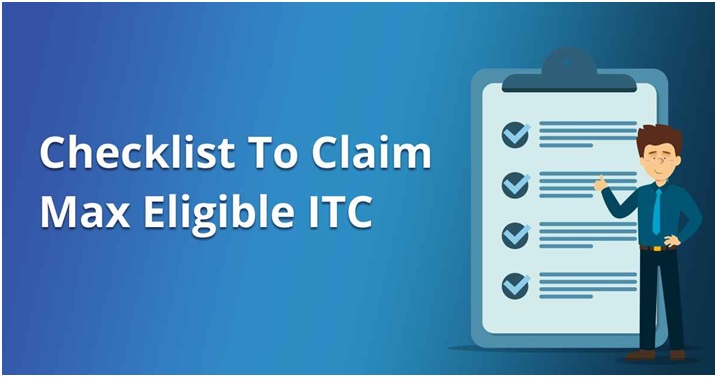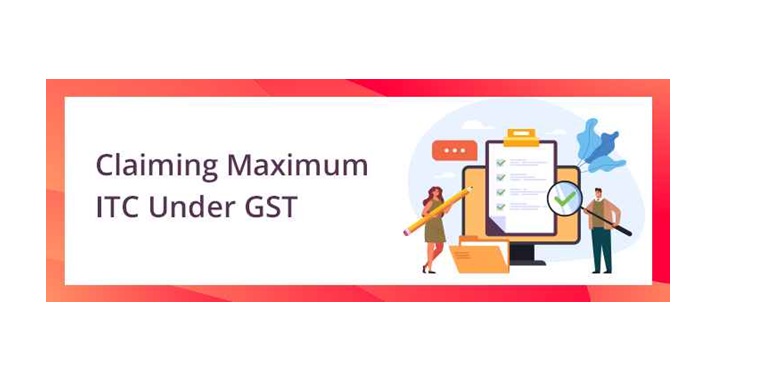GST Input Tax Credit is the most critical feature of the GST structure from the taxpayer’s perspective.
Hence, it is also essential that the businesses have a plan to claim the maximum of their eligible Input Tax Credit under GST so that they do not have to pay their GST liabilities in cash.
In this article, we will be sharing a task list that every business should follow to claim their maximum eligible Input Tax Credit in 2022.
Three invincible of GST Input Tax Credit
- GSTR-2A
- GSTR-2B
- Purchase Register of businesses
We like to call them the ‘Invincible’ of the Input Tax Credit under GST because the whole game of ITC revolves around these three documents.
Let me give you a brief description of each of the three entities mentioned above:
- GSTR-2A in GST
- GSTR-2A is a ‘Purchase related’ tax return.
- Automatic generation by GST portal for every registered business.
- Taxpayer’s GSTR-2A is generated based on the returns filed by the Supplier like GSTR-1, GSTR-5, GSTR-6, GSTR-7&GSTR-8.
- It’s a dynamic statement that gets updated every month.
- GSTR-2B in GST
- Generatedmonthlybased on the GSTR-1 returns filed by his Supplier.
- GSTR-2B is auto-drafted & functions as a consolidated statement of the eligible ITC available for the taxpayer for the given month.
- Gets generated on the 12th of every month.
- CBIC has stressed several times that businesses should look upon GSTR-2B as the standard and definitive source to check their eligible Input Tax Credit for the given month.
Hence, from the above statement, we would like to reiterate that GSTR-2B is the most important document to claim the eligible Input Tax Credit under GST.
- Purchase Register of the taxpayer
- GSTR-2B vs Purchase register reconciliation activity is the far most important activity whilst claiming eligible ITC.
- It must be a routine of the taxpayer/business to match & check every entry from his purchase register or existing ERP software against the ITC displayed in the monthly GSTR-2B.
- GSTR-2B vs Purchase register reconciliation is necessary to maintain transparency between the Supplier and the businesses and keep the fraudulent or defaulting suppliers away.
- This activity shall help businesses protect from losses in working capital and claim maximum eligible GST Input Tax Credit.
Claim maximum ITC – In simple steps

1. Check invoices for validity
Businesses must make sure to scrutinize every detail printed on the receipt or invoice they receive for its validity.
In case if the business gets involved in a bogus invoice scam, the business may probably invite a GST audit by department for claiming ineligible ITC.
Hence, businesses must stay cautious in checking the validity & correctness of every invoice.
2. Check QR codes on invoices
GST e-Invoice is now embedded with QR codes for faster processes.
Businesses must check this QR code as well on every e-invoice they receive from their Suppliers.
All the purchase e-Invoices are expected to have a clearly printed QR code on them that can be easily scanned.
3. Check invoice details in GSTR-2A
GSTR-2A is auto-generated & contains all the purchase-related transactions for the preceding month.
Businesses must reconcile the e-Invoices received from the suppliers with the entries available in the monthly GSTR-2A.
Note– An e-Invoice canceled by the Supplier shall NOT reflect in the recipient’s GSTR-2A.
4. Confirm invoice details in GSTR-2B
As mentioned in the earlier section, GSTR-2B is essential for claiming maximum & eligible Input Tax Credit.
Details of your purchases shall reflect in your GSTR-2BONLY if your Supplier has filed his GSTR-1 correctly & on time corresponding to the purchase.
Businesses must check their GSTR-2B before claiming input Tax Credit for the month, as GSTR-2B shall give you a final confirmation regarding the eligible ITC.
5. Following up with the defaulting suppliers
It’s absolutely important for your Supplier to file his GSTR-1 accurately& before the due date.
This is essential because your GSTR-2B will be based on the GSTR-1 filed by your Supplier. Therefore, if your Supplier fails to file GSTR-1 on time, you shall not be able to claim the ITC on the purchase you made from that defaulting Supplier.
To avoid this, businesses must follow up with the defaulting Supplier & ask them to file their GSTR-1 well before the due date.
Informing about this discrepancy to the Supplier shall compel him to file his GSTR-1 corresponding to your purchase & you shall be able to claim your eligible ITC in the succeeding month.
6. Caution about ‘Provisional ITC limit’
At present, the maximum Provisional ITC limit the business can claim is capped at 5% of your total eligible ITC.
Businesses must adhere to Rule 36(4) of the CGST Act of 2017&MUST NOT exceed the limit of 5% while claiming Provisional input Tax Credit.
Whenever the business avails provisional ITCfor the months, it’s recommended that the business marks these invoices for future reference.
7. Don’t keep your payments pending
We recommend businesses make payments to the vendors within a period of six months from the date of purchase.
If you have paid your Supplier & yet have claimed Input Tax Credit under GST on this transaction, this ITC has to be reversed.
The businesses should complete their payment to the vendor well before the deadline to easily claim MAXIMUM eligible ITC.
In a nutshell…
In this article, we understood that the most important thing for claiming the maximum eligible ITC in 2022 is to have a proper reconciliation setup in place.
Read More: Eatiko – Food Delivery & Restaurant Finder
Manual reconciliation is tedious and prone to errors; hence, we recommend using an automated GSTR-2B vs Purchase reconciliation toolbyGSTHerothat will give you a flawless reconciliation report.
This will help you in claiming maximum GST Input Tax Credit for every month without any ineligible ITC.

